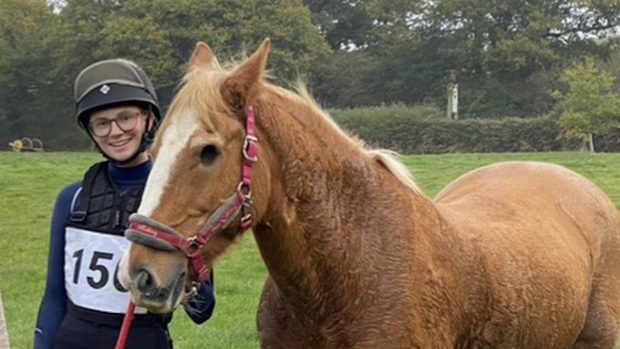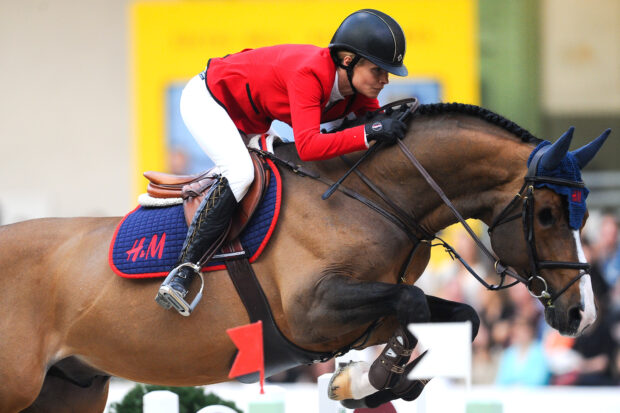If the corneal surface of the eye is damaged, the most likely result is an ulcer, which can be very painful. Such corneal injuries are prone to secondary infection by bacteria and fungi, which can, in some unlucky horses, result in the development of deep, non-healing ulcers or abscesses.
Corneal ulcers are so common that they will be the first thing a vet will suspect when presented with a horse with suddenly red, sore, half-closed and weeping eye.
Diagnosis is made following a thorough examination of the eye. Some corneal injuries are readily observed, but very tiny ulcers or abrasions show up more clearly following the application of various coloured dyes that stain them green or pink. The appearance of the lesion can be suggestive of the cause.
Swabs, scrapings or biopsies are sometimes necessary to confirm diagnosis with deep or non-healing ulcers. The material can be examined under the microscope to detect the presence and type of bacteria or fungi. Antibiotic sensitivity testing may also be performed.
Thankfully, treatment of most corneal ulcers is straightforward. Providing the equine patient is amenable to having medication administered to the eye, a short course of antibiotic drops or ointment will rapidly return the eye to normal.
Difficulties arise when the horse objects to anything being put into the sore eye, and if bribes, sedation or a twitch will not improve matters, the vet may insert an indwelling catheter. This allows remote administration of the treatment via soft rubber tubing implanted under the eyelid and then plaited into the mane enabling treatment at a safe distance. There are even sophisticated tiny battery-driven pumps available that permit — at a price — a constant drip of treatment to be pumped into the eye.
Typically, not everything with horses goes according to plan, so although the majority of ulcers will resolve within a few days, a small percentage do not heal within the expected time frame. It can be a really frustrating condition for all concerned, when despite all efforts the eye does not seem to improve. There can be a variety of reasons for this:
- Something continually rubbing on the eye, such as a tiny bit of dirt embedded under the eyelid or, more rarely, an eyelash growing the wrong way or in the wrong place, so it constantly irritates.
- A persistent infection may prevent healing. Bacteria are usually to blame, but in hot, humid areas, especially America, fungal eye infections can be catastrophic. Recently, such cases have been reported in the UK, which could be considered a nasty side effect of global warming.
The most difficult to deal with is the so-called indolent ulcer, where the damaged eye surface becomes unhealthy and unable to heal. These cases may need surgical intervention as well as medical treatment.
Surgery
If eye drops or ointments do not produce a cure, the vet may treat the non-healing ulcer by gently scraping away the area of unhealthy tissue. Sometimes this is achievable with the horse standing, but other cases will require general anaesthesia.
A variety of different procedures can be performed, from a simple scrape to a more elaborate removal of diseased tissue known as a keratotomy. A study of 23 cases suggested that a single debridement, or surgical scrape, early on was beneficial in reducing healing time.
Some cases also benefit from cautery with chemicals, and others are treated by application of a soft contact bandage lens, which helps to protect the eye as it heals.
Some cases end up having more radical surgery under general anaesthesia, where a graft of tissue from the conjunctiva (membranes around the eye) is carefully sutured on to the eye as a natural bandage to encourage healing.
In small animals, such eye problems are sometimes treated by either sewing the third eyelid over the eye or by sewing the eyelids together. However, it is not ideal for the majority of horses, as it conceals what is going on underneath and makes treatment difficult to apply to the eye.
In recent years, treatment techniques have improved and the correct medical therapy and prompt surgical intervention have improved the chance of a successful outcome in many horses who previously would have gone blind.



